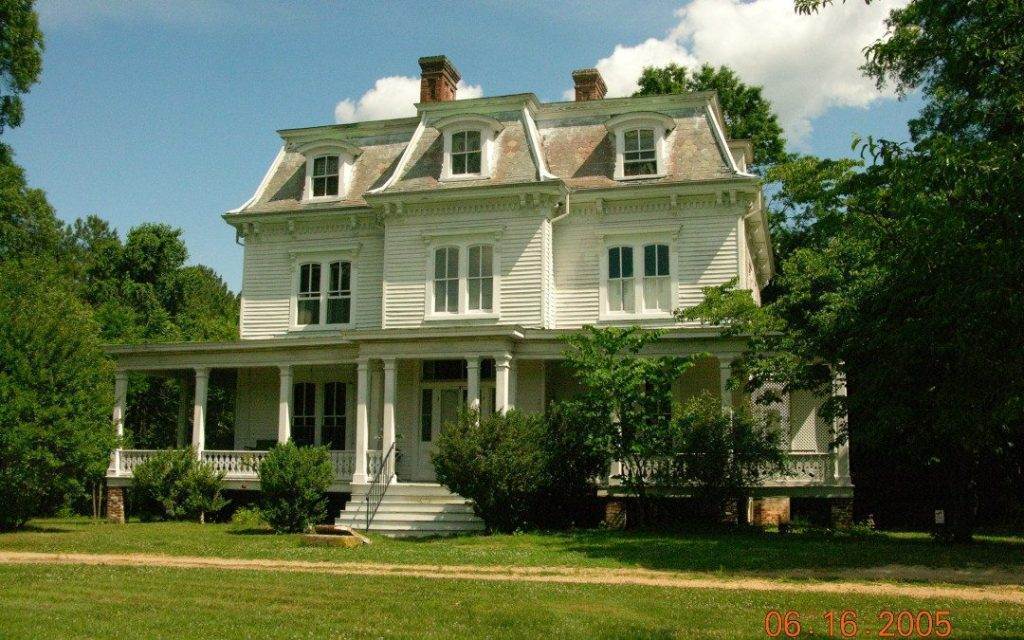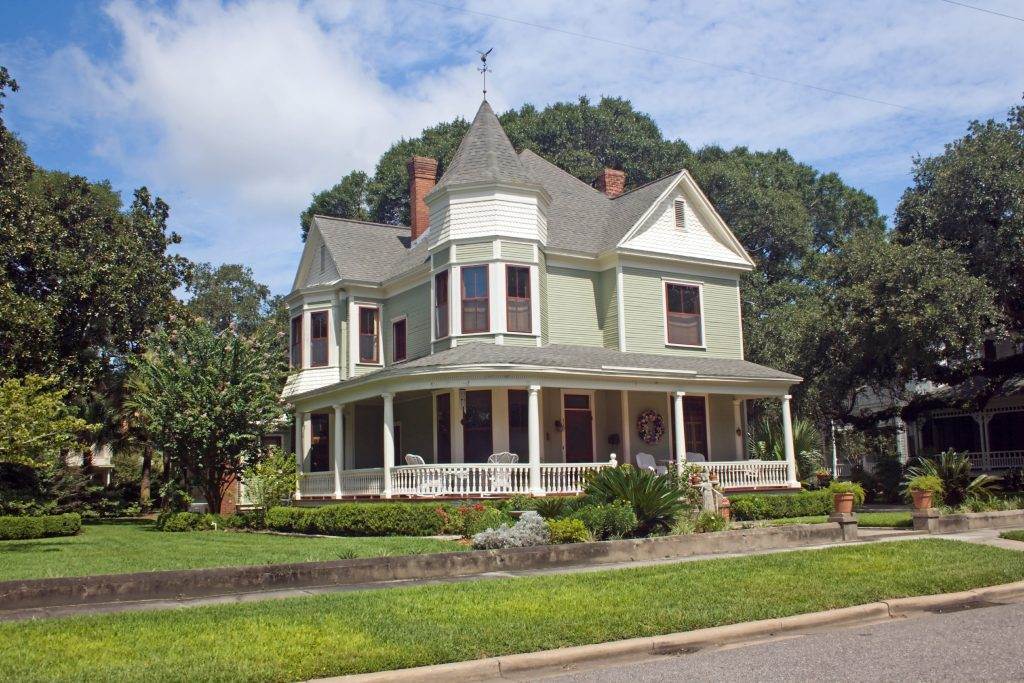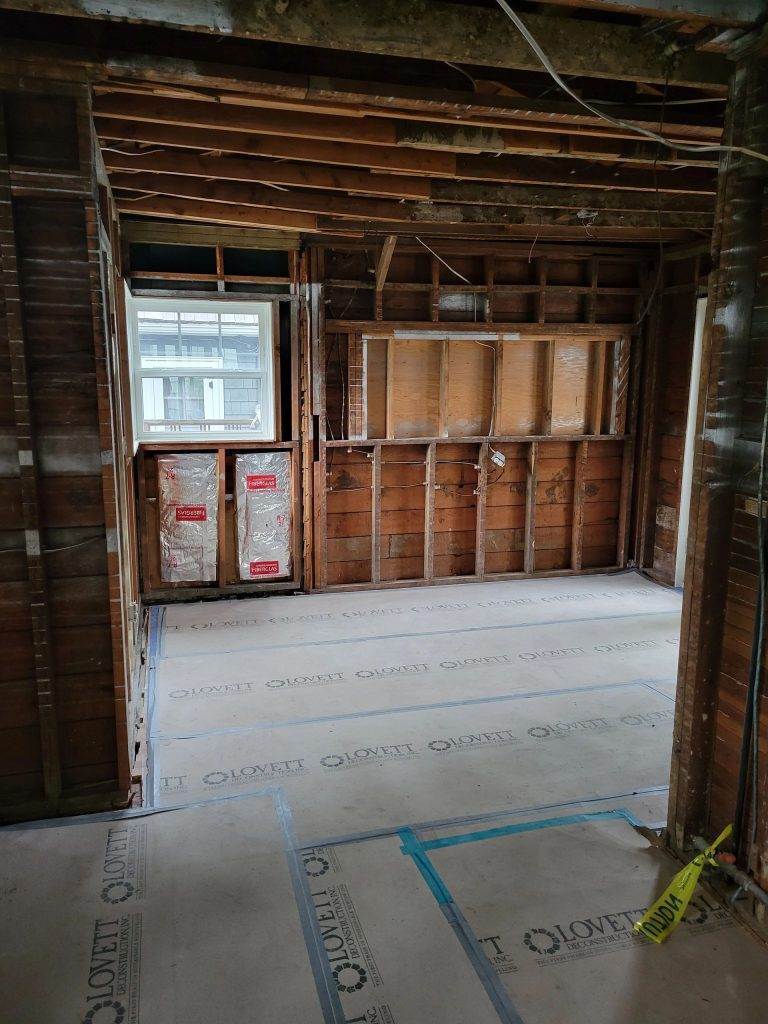In the realm of architecture, the longevity of old houses continues to captivate us. These timeless structures, with their enduring charm and solid foundations, stand as symbols of endurance against the passage of time. But what is it about these ancient abodes that make them stand the test of time? Is it the craftsmanship of their builders or the materials used? In this article, we will explore the fascinating reasons behind the remarkable durability of old houses, shedding light on the secrets that have enabled them to gracefully withstand the ravages of time.

This image is property of www.vintagebuilding.com.
Quality of construction
Building materials
One of the key factors that contribute to the longevity of old houses is the quality of the building materials used. In earlier times, craftsmen relied on natural materials such as wood, stone, brick, masonry, and metal for construction. These materials were carefully selected for their durability and strength, ensuring that the houses could withstand the test of time. Wood, for example, was chosen for its flexibility and ability to withstand the elements, while stone and brick provided excellent strength and stability. By using high-quality building materials, old houses were built to stand strong for centuries.
Workmanship
Aside from the choice of building materials, the workmanship employed in constructing old houses played a crucial role in their long-lasting nature. Skilled craftsmen and artisans painstakingly crafted each detail, ensuring precise execution and exceptional quality. From intricate carpentry work to intricate masonry and metalwork, it is the dedication and expertise of these craftsmen that contributed to the longevity of old houses. The attention to detail, precision, and pride in their workmanship instilled a sense of durability and solidity in every structure.
Foundations
The strength of a house’s foundations is paramount to its longevity. Old houses were built with robust and well-engineered foundations that could bear the weight of the structure over time. Deep and solid footings were laid, providing a stable base for the entire house. These foundations were often made of durable materials such as stone or reinforced with concrete, ensuring that they could withstand the natural forces that would arise as the years passed. The careful construction of these foundations set the stage for a strong and enduring building.
Durability of materials
Wood
Despite being a natural material, wood has proven to be remarkably durable in old houses. The use of dense hardwoods, such as oak or mahogany, ensured that the structural components of these homes, such as beams, rafters, and floors, were exceptionally resistant to decay and damage. Additionally, wood treated with protective finishes, such as linseed oil or varnish, provided an extra layer of defense against the elements. Regular maintenance, including painting and sealing, further enhanced the durability of the wood, enabling it to withstand the test of time.
Stone
Stone has been utilized throughout history for its durability, strength, and timeless beauty. Old houses constructed using stone as a primary building material have stood strong for centuries, withstanding the elements and retaining their structural integrity. The natural density and resistance of stone make it a reliable choice for foundations, walls, and even decorative elements. Its ability to withstand temperature changes, moisture, and other environmental factors contribute to the longevity of old stone houses.
Brick
Brick has long been recognized for its durability and fire-resistant properties. Old houses made with brick have proven to be remarkably long-lasting due to the inherent strength and stability of this material. The process of firing clay bricks in high-temperature kilns strengthens the material, making it resistant to weathering and erosion. The interlocking pattern of brickwork provides additional structural integrity, ensuring that the house remains steadfast over time. The naturally insulating qualities of brick also contribute to the energy efficiency and durability of old brick houses.
Masonry
Masonry, which combines the use of stone or brick with mortar, is another construction method that has contributed to the durability of old houses. The combination of these materials creates a sturdy and stable structure that can withstand the test of time. The mortar acts as a binding agent, holding the stones or bricks together while also providing flexibility to accommodate slight movements and settlement. The strength and durability of masonry construction have allowed many old houses to withstand centuries of use and exposure to the elements.
Metal
Metal, particularly wrought iron, has played a vital role in the construction of old houses, particularly in elements such as railings, gates, and ornamental features. The durability of metals like iron makes them resistant to rust and decay, ensuring that these architectural details remain intact over the years. When properly maintained and protected from the elements, metals can retain their strength and appearance, contributing to the overall longevity of old houses.

This image is property of img1.wsimg.com.
Maintenance and repairs
Regular upkeep
One of the reasons why old houses last so long is the dedication to regular upkeep and maintenance. Homeowners of old houses understand the importance of proactive care in preserving the integrity of the structure. Regular tasks such as cleaning gutters, inspecting roofs, and sealing any cracks or gaps help prevent damage caused by water infiltration or pests. Routine maintenance also includes regular painting and refinishing of wood surfaces, which not only enhance the appearance but also protect against rot and decay. By staying diligent in regular upkeep, homeowners can extend the lifespan of their old houses significantly.
Proactive maintenance
In addition to routine upkeep, proactive maintenance focuses on identifying and addressing potential issues before they escalate into larger problems. This approach involves regular inspections by professionals, such as architects or structural engineers, who can identify any signs of deterioration or weaknesses in the house’s structure. By catching and addressing issues early on, homeowners can avoid costly repairs and ensure the longevity of their old houses. Proactive maintenance may involve reinforcing foundations, replacing worn-out materials, or implementing improvements to enhance the house’s durability.
Preservation efforts
Preservation efforts are crucial in maintaining the historical, architectural, and cultural significance of old houses. Organizations dedicated to historic preservation work to protect and restore these structures, ensuring that they can continue to stand for future generations. Preservation efforts involve extensive research, documentation, and careful restoration techniques that honor the original craftsmanship and materials. By actively engaging in preservation initiatives, communities and individuals can contribute to the long-lasting nature of old houses, preserving their historical and cultural value.
Adaptive reuse
Adapting to changing needs
Old houses have demonstrated their versatility and adaptability by accommodating changing needs over time. As society evolves, homeowners have found innovative ways to repurpose and modify old houses to meet modern requirements. Whether it is converting large family homes into multi-unit residences or transforming old barns into commercial spaces, these adaptive reuse projects breathe new life into old structures, extending their lifespan and relevance. By adapting to changing needs, old houses continue to serve their purpose while maintaining their historical character.
Repurposing old houses
Another way in which old houses have shown their longevity is through the repurposing of these structures. Rather than being demolished, old houses can be repurposed for various purposes such as museums, community centers, or offices. This repurposing not only preserves the architectural heritage but also adds value to the surrounding community. It allows for a sustainable use of existing resources, reducing the need for new construction and minimizing waste. By repurposing old houses, we extend their lifespan and contribute to a more sustainable and environmentally conscious future.
Sustainable living
Old houses inherently possess sustainable qualities that align with the principles of sustainable living. The use of natural and durable building materials reduces the need for resource-intensive manufacturing processes. Additionally, the longevity of old houses reduces the demand for new construction materials and the associated environmental impact. The adaptive reuse of old houses for sustainable living practices, such as incorporating energy-efficient systems or utilizing renewable energy sources, further enhances their eco-friendliness. By embracing the principles of sustainable living, old houses continue to serve as examples of longevity and environmental responsibility.

This image is property of img1.wsimg.com.
Cultural significance
Historical preservation
Old houses hold immense historical significance, reflecting the architectural styles, building techniques, and cultural heritage of a particular era. Preserving these houses allows us to connect with the past, providing valuable insights into our history and cultural identity. From grand mansions to humble cottages, each old house tells a unique story. Historical preservation initiatives aim to safeguard and maintain these structures, ensuring that future generations can appreciate their historical context and architectural value.
Heritage value
Beyond their historical significance, old houses often hold great sentimental and emotional value for individuals and communities. They serve as tangible links to our heritage and ancestry, offering a sense of continuity and belonging. Old houses bear witness to the lives, stories, and memories of those who inhabited them throughout the years. The preservation of these houses not only protects architectural treasures but also celebrates the intangible heritage that resides within their walls. Recognizing and honoring the heritage value of old houses fosters a sense of identity and pride within communities.
Environmental factors
Climate conditions
Old houses, with their proven longevity, have demonstrated their resilience in various climate conditions. Whether it is extreme temperatures, high humidity, or heavy rainfall, these houses have stood the test of time. The use of suitable building materials, insulation techniques, and proper ventilation contribute to the house’s ability to withstand the challenges posed by different climates. Old houses have adapted to various climatic conditions through architectural design and construction, resulting in homes that can withstand the environmental demands of their specific regions.
Natural disasters
Old houses have often proven their ability to withstand natural disasters, such as earthquakes, hurricanes, or floods. The durable construction methods employed in these houses, along with their robust foundations, provide a level of resilience that helps them weather these significant events. Additionally, localized building practices and regional knowledge of natural disasters have influenced the design and construction of old houses, incorporating techniques that minimize damage and increase safety. The ability of old houses to endure such adversities further attests to their long-lasting nature.
Resistance to wear and tear
The materials and construction techniques used in old houses are often chosen for their ability to withstand wear and tear over time. From the everyday activities of residents to the passage of time itself, old houses are designed to withstand the stresses and strains of daily use. Durable materials, proper maintenance, and attention to detail in construction all contribute to the resistance of old houses against deterioration. By considering the potential challenges and demands of occupancy, old houses were built to last, ensuring that they remain functional and structurally sound for decades, if not centuries.

This image is property of buyersask.com.
Design and architecture
Functional layout
Old houses often feature a functional layout that maximizes space and facilitates efficient use. These houses were designed with careful consideration for the needs of the occupants, prioritizing practicality and convenience. From well-proportioned rooms to thoughtful storage solutions, the layouts of old houses have proven their effectiveness over time. The well-planned circulation patterns and attention to practical details make old houses highly livable, meeting the needs of residents for generations.
Aesthetics
Old houses are revered for their timeless aesthetics, serving as architectural landmarks in their communities. The design details and decorative elements incorporated into these houses reflect the prevailing styles and trends of their respective eras. From ornate Victorian features to clean lines of mid-century modern design, old houses showcase a rich variety of architectural aesthetics. The preservation of these aesthetic elements is not only a testament to the craftsmanship of the past but also enhances the visual appeal and character of the surrounding neighborhoods.
Architectural styles
Old houses encompass a wide range of architectural styles that have stood the test of time. Gothic, Georgian, Victorian, Craftsman, and Colonial are just a few examples of the diverse architectural styles found in old houses. These styles were often influenced by cultural, historical, and regional factors, resulting in unique and distinctive designs. An appreciation for architectural style and a commitment to preserving these stylistic elements have contributed to the longevity of old houses, allowing us to experience and enjoy the architectural heritage of different periods.
Innovative features
Old houses often showcase innovative design features that were ahead of their time. Whether it is the use of passive cooling and ventilation techniques or the incorporation of natural light through large windows, old houses often employed innovative solutions to address environmental and lifestyle needs. These features not only enhance the comfort and functionality of the houses but also reflect the ingenuity of the architects and builders who incorporated them. By embracing innovative design elements, old houses have remained relevant and adaptable through changing times.
Building codes and regulations
Stringent standards
Old houses were often built adhering to stringent building codes and regulations that aimed to ensure structural integrity and safety. These standards, although varying across different time periods and regions, established minimum requirements for construction methods, materials, and practices. Compliance with these codes and regulations held builders accountable for the quality and safety of their work, resulting in well-constructed houses that could withstand the test of time. The stringent standards set in the past continue to influence and inform modern building practices, further promoting longevity and safety.
Stability measures
To guarantee the stability of old houses, builders employed various measures and techniques to reinforce the structure. This included reinforcing load-bearing walls, utilizing trusses and braces for added support, and incorporating cross-bracing to strengthen the framework. Foundations were carefully designed and constructed to distribute the weight of the house evenly and counter any potential settling or shifting. The attention to stability measures and the meticulous engineering behind old houses significantly contribute to their long-lasting nature.
Safety requirements
Old houses were built with safety in mind, with features and materials specifically chosen to ensure the well-being of the occupants. Fire-resistant materials, such as brick, stone, and metal, were favored to minimize the risk of fire-related disasters. Safety measures included the inclusion of fireplaces, escape routes, and abundant natural light to increase visibility and aid in emergencies. While safety requirements have evolved over time, the fundamental principle of prioritizing safety in construction has remained consistent, contributing to the longevity of old houses.

This image is property of img1.wsimg.com.
Inter-generational knowledge transfer
Traditional building techniques
Old houses owe much of their longevity to the transfer of traditional building techniques from one generation to the next. Craftsmen and builders, often part of familial or apprenticeship lines, passed down their knowledge and expertise in construction methods. From understanding the properties of different materials to employing specific joinery or jointing techniques, these traditional practices ensured the construction of robust and enduring houses. The inter-generational knowledge transfer that occurred in the building trades allowed for continuous improvement and refinement of construction techniques, resulting in houses that have stood strong for centuries.
Skills passed down
In addition to the technical knowledge, the skills required for the construction and maintenance of old houses have been passed down from generation to generation. From specialized crafts such as carpentry or masonry to general repair and maintenance skills, these traditional skills ensure that old houses are cared for properly. The continued reliance on these skills, combined with an appreciation for the craftsmanship of the past, allows for the preservation and upkeep of old houses for future generations.
Experience in construction
The experience gained through years of working in the construction industry has contributed to the longevity of old houses. Builders, architects, and craftsmen accumulated a wealth of experience and practical knowledge that guided their construction practices. This experience allowed them to make informed decisions regarding materials, design, and construction methods, ensuring the durability and longevity of the houses they built. Drawing upon the collective experience of those who came before, professionals in the construction industry continue to apply lessons learned from old houses to contemporary projects, maintaining a legacy of excellence in construction.
Psychological importance
Sentimental value
Old houses hold deep sentimental value for many individuals and communities. These houses often serve as the backdrop for cherished memories and personal milestones. Whether it is a childhood home or a family heirloom, the sentimental value attached to old houses creates a strong emotional connection that goes beyond their physical attributes. This emotional attachment contributes to the preservation and care of old houses, ensuring that they continue to be cherished for generations to come.
Sense of continuity
Old houses provide a sense of continuity and connection to the past. Walking through the rooms of an old house can evoke a profound sense of timelessness, bridging the gap between generations and reminding us of our place in history. By preserving old houses, we preserve a tangible connection to our collective past, fostering a sense of continuity and anchoring us to the roots of our communities.
Emotional attachment
Old houses often evoke feelings of nostalgia and evoke a sense of place. These houses have witnessed the laughter, tears, and everyday moments of countless individuals over the years. The emotional attachment to old houses stems from the shared experiences and stories associated with them. The walls, floors, and architectural details become infused with the lives and emotions of the occupants, creating a unique sense of belonging and identity. The psychological importance of old houses manifests in the care and preservation efforts dedicated to ensuring their long-lasting presence in our lives.
